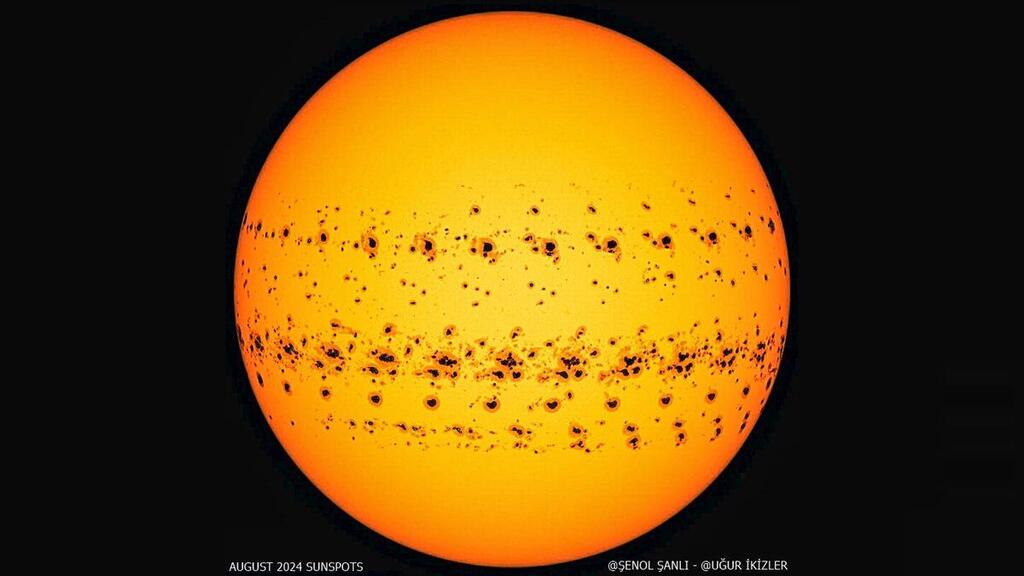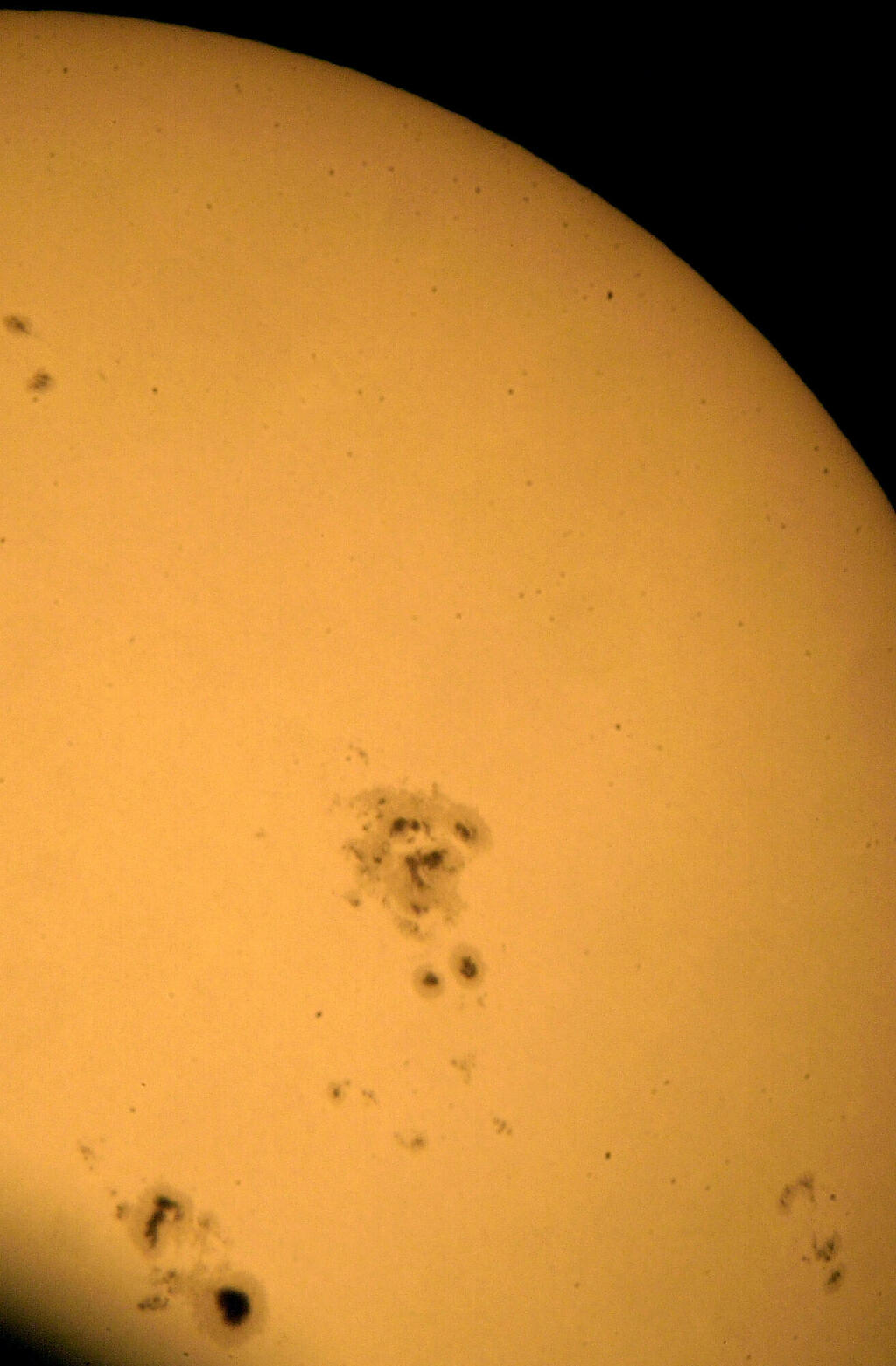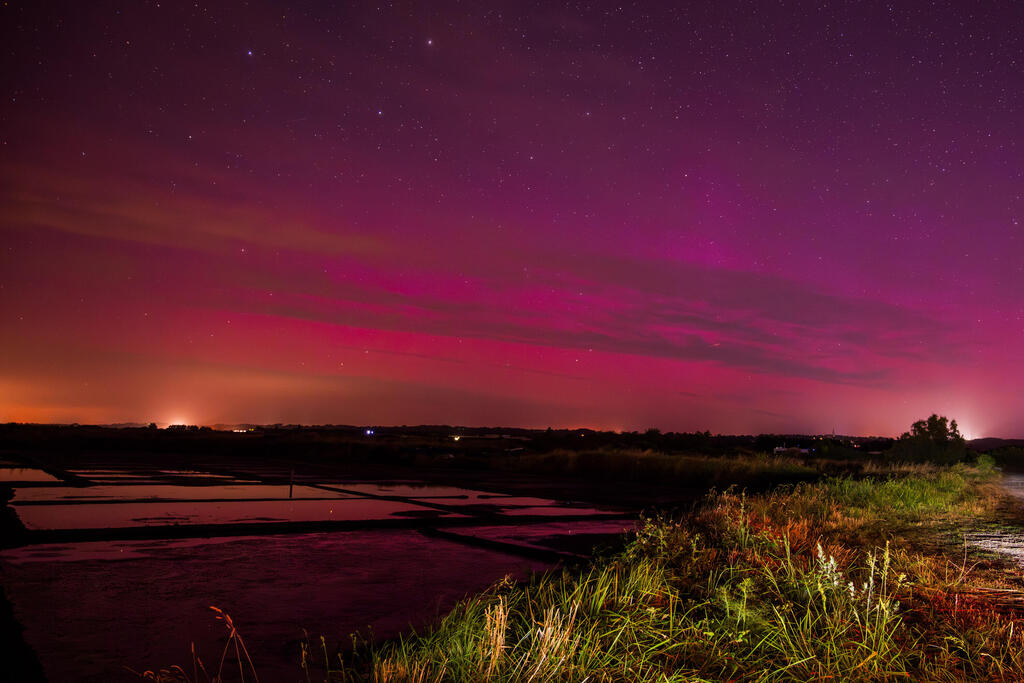Getting your Trinity Audio player ready...
According to data from the American National Oceanic and Atmospheric Administration, the number of black spots observed on the sun's surface during August was the highest in almost 23 years. In addition, the latest sunspot count was twice as high as initial predictions, indicating that solar activity will be higher than scientists first thought.
The Livescience website states that sunspots are areas where waves of electromagnetic radiation break through the sun's magnetic field, creating relatively cool spots that appear black to us due to an optical illusion. This leads to enormous ejections from the sun called solar storms. The phenomenon indicates that we are progressing toward the peak of the solar cycle which lasts about 11 years.
The part of the cycle where the number of active sunspots is relatively low is called solar minimum. Solar minimum is the regular period of least solar activity in the Sun's 11-year solar cycle. During solar minimum, sunspot and solar flare activity diminishes and often does not occur for days at a time.
The part of the cycle where the number of active sunspots is high is called "solar maximum". For example, at the end of 2019, shortly before the start of the current solar cycle, there were 40 consecutive days with no visible sunspots. As the Sun's magnetic field weakens, the number of sunspots increases rapidly, reaching a peak during solar maximum.
During August, there was an average of 215.5 daily sunspots, according to the Space Weather Prediction Center (SWPC), which is part of the National Oceanic and Atmospheric Administration and the US National Weather Service. The last time the number of sunspots was this high was in September 2001, during the solar maximum of Cycle 23 (the current cycle is 25), with an average of 238.2 sunspots. The number of sunspots peaked on August 8, when with observed 337 sunspots, the highest number per day since 2001.
4 View gallery


Highest count of sunspots since 20001
(Illustration: SILSO/Royal Observatory of Belgium)
Since the beginning of the current cycle, the number of sunspots has been higher than the experts' initial predictions. The numbers began to climb in early 2022, reaching an eight-year high by the end of that year. By June 2023, the average number exceeded each of the months from the previous cycle, a trend that remains prevalent even now. As a result, a revised forecast for the current cycle was published in October last year, which indicates higher-than-expected activity.
An increase in the number of sunspots is not the only indication that we are living in a solar maximum. In early May, Earth was hit by the strongest geomagnetic storm in more than 21 years, causing the night sky to change color as seen in the northern lights but in unusual more southern regions.
A few days later, a solar flare was measured to be the most powerful since 2017. If the sun's activity continues to increase and the Earth is hit by more powerful solar storms, such as the Carrington Event in 1859, we will experience the spectacular northern lights phenomenon at lower latitudes. However, there will also be devastating consequences for infrastructure and the activity of satellites in space.
The Carrington event is the largest solar storm recorded in history, and its impact was felt around the world. On September 1-2, 1859, the Sun discharged a large-scale solar flare, which sent a stream of high-energy particles toward Earth. As a result, the northern lights and southern lights were also seen in the southern areas of the U.S. and Central America.
The storm also affected technology and the communication systems of the time, causing many to fail. The telegraphs, the main means of communication, experienced many failures, and sometimes they worked independently, even when the telegraph wires were cut. This emphasizes the need to prepare for such a scenario in the present.




